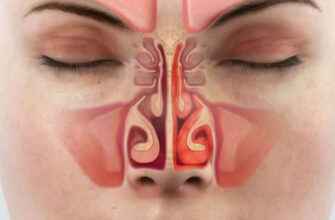Bell’s palsy is a condition that affects the facial nerve, causing weakness or paralysis on one side of the face. It can be a scary and unsettling experience, but understanding the symptoms of Bell’s palsy can help you seek treatment and manage the condition. In this article, we will explore the 12 key symptoms of Bell’s palsy and provide some tips for managing the condition.
1. Sudden weakness or paralysis on one side of the face
The most obvious symptom of Bell’s palsy is sudden weakness or paralysis on one side of the face. This can make it difficult to smile, blink, or move the affected side of the face.
2. Drooping of the eyelid or corner of the mouth
Another common symptom of Bell’s palsy is drooping of the eyelid or corner of the mouth on the affected side. This can cause difficulty with facial expressions and can also make it difficult to close the eye completely.
3. Difficulty speaking or eating
Because Bell’s palsy affects the muscles of the face, it can also make it difficult to speak or eat. You may notice difficulty pronouncing certain words or difficulty chewing and swallowing.
4. Pain or discomfort around the jaw or behind the ear
Some people with Bell’s palsy may experience pain or discomfort around the jaw or behind the ear on the affected side. This is thought to be caused by inflammation of the facial nerve.
5. Increased sensitivity to sound or light
In some cases, Bell’s palsy can cause increased sensitivity to sound or light on the affected side. This can be a frustrating symptom, but it is usually temporary.
6. Loss of taste or changes in taste
Because the facial nerve is responsible for transmitting taste signals from the tongue, some people with Bell’s palsy may experience loss of taste or changes in taste on the affected side.
7. Dryness or excessive tearing in the eye on the affected side
Bell’s palsy can also affect the tear glands in the eye, causing dryness or excessive tearing in the eye on the affected side.
8. Headache or facial pain
Some people with Bell’s palsy may experience headaches or facial pain on the affected side. This is thought to be caused by inflammation of the facial nerve.
9. Difficulty closing the eye on the affected side
Because Bell’s palsy can affect the muscles that control eye movement, it can make it difficult to close the eye on the affected side. This can lead to dryness and irritation of the eye.
10. Ringing in the ear on the affected side
Some people with Bell’s palsy may experience ringing in the ear on the affected side. This is thought to be caused by inflammation of the facial nerve.
11. Reduced ability to smile or make facial expressions
Because Bell’s palsy affects the muscles of the face, it can make it difficult to smile or make facial expressions on the affected side. This can be frustrating and can also affect your ability to communicate.
12. Numbness or tingling on the affected side
In some cases, Bell’s palsy can cause numbness or tingling on the affected side of the face. This is thought to be caused by inflammation of the facial nerve.
If you are experiencing any of these symptoms, it is important to seek medical attention as soon as possible. While there is no cure for Bell’s palsy, there are treatments available that can help manage the symptoms and improve your quality of life. Your doctor may prescribe medications, such as corticosteroids or antivirals, to reduce inflammation and prevent further damage to the facial nerve.











